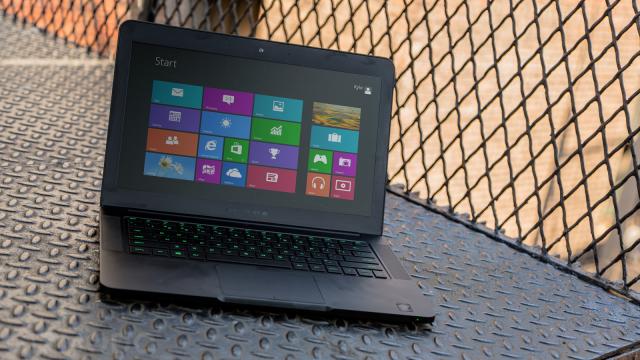Everyone’s first impression of the 14-inch Razer Blade, even more than its 17-inch older brother, is Ha, they made a MacBook. And then Oh — wait. They made a MacBook. And it’s actually even better than that.
What Is It
A 14-inch gaming laptop that’s small and light enough to be your everyday machine.
Why Does It Matter
For years now, laptops have been getting smaller, thinner and just better overall. But only a certain, extreme kind of thin has gotten any design consideration to speak of. Anyone who wanted more power from their laptop was basically stuck with a clunky box if they wanted something that could play games (or crunch numbers) well and run Windows.
The 17-inch Blades from last year were wholly impressive from the standpoint of bringing the contents (more or less) of a massive gaming laptop into something much smaller than we had ever really considered. But 17 inches is still too big for most of our bags, and for most of us in general, really. But 14 inches is an almost the perfect size for anyone who doesn’t need the tiniest of laptops. If the 17-inch Blade was a Humvee, the 14-inch is a tricked out Mustang.
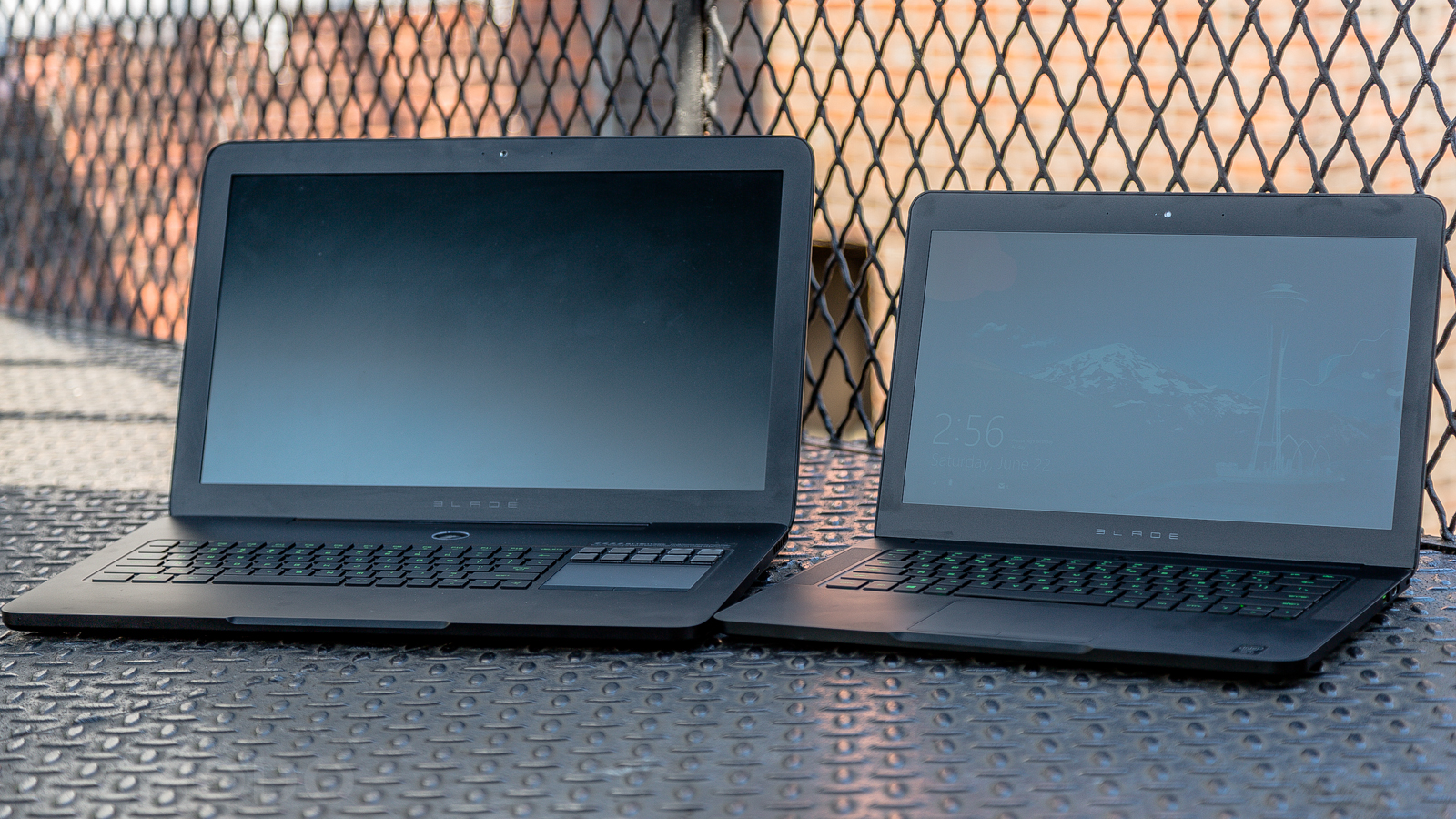
But the real reason that this machine and others like it are important is what it means for the next few generations of laptops. Integrated graphics are improving rapidly — Haswell is really impressive in a lot of ways — but only in the context of the way we game and use computers now. For the next level stuff, things like the Oculus Rift, or stuff we haven’t even thought of yet, we need more power. We’ll have to draw the same graphics twice, for each eye, or appease some other crazy contortion. The Ock lags on even solid hardware, like last year’s 17-inch Blade (now Pro) refresh. We want smaller, more beautiful laptops. But we’ll also need raw power. And this is the best shot at combining the two.
Design
All black and so beautiful. The Blade is anodised black aluminium that’s gorgeous to look at, although it attracts fingerprints and other smudges like a black hole. It’s as slim as a 13-inch retina display MacBook Pro, and it has similar hard lines, as opposed to the old 17-inch’s more rounded form. It’s also ditched the Switchblade hotkeys and instead has a single trackpad in the centre of the body. Instead of being a single piece of glass, like most premium laptops, it’s got two buttons at the bottom of the trackpad. There are two speaker grills along the sides of the keyboard. The keys are backlit in green and actually look pretty awesome whether lit or unlit; the lid has Razer’s garish logo illuminated in green as well.
Using It
When you first sit down with the Blade, you don’t really want to change a thing. It feels impossibly thin for something you expect to squeeze good game graphics out of, and as solid as anything that’s ever come out of Apple. The most impressive part, maybe, is all the little things it gets right that old-school laptop makers consistently get so wrong. The hinge on the lid is perfect — no wobble but not too stiff to move. The body itself is clean, clear of any excess ornamentation (beyond that hideous logo). The speakers are a bit of an eyesore, but Razer’s been over-conscious about sound since a few reviewers killed them about the first Blade’s anemic speakers. (The left speaker on our model did have one edge that wasn’t flush with the chassis, which was a bit distracting and the only manufacturing imperfection we saw). Even the keyboard and trackpad are wonderful. The keyboard is properly spaced for typing, with good travel distance to type full speed on, but also with enough distance to WASD with precision.
The biggest issue with using it day to day is the idiotic buttons at the bottom of the trackpad. They’re flimsy, too small, and given how well the rest of the trackpad responds, totally unnecessary. Yes, they’re included to save on cost (mechanical parts) and space in the body. But that’s not a good compromise to make; get the trackpad right, it’s one of three things on a laptop that really affects your senses (along with screen and keyboard). Of course, while gaming, the downside is minimised. But for a “gaming” laptop with so much potential to just be the single best Windows laptop (and it probably still is for the weight class above ultrabooks), it’s borderline unacceptable.
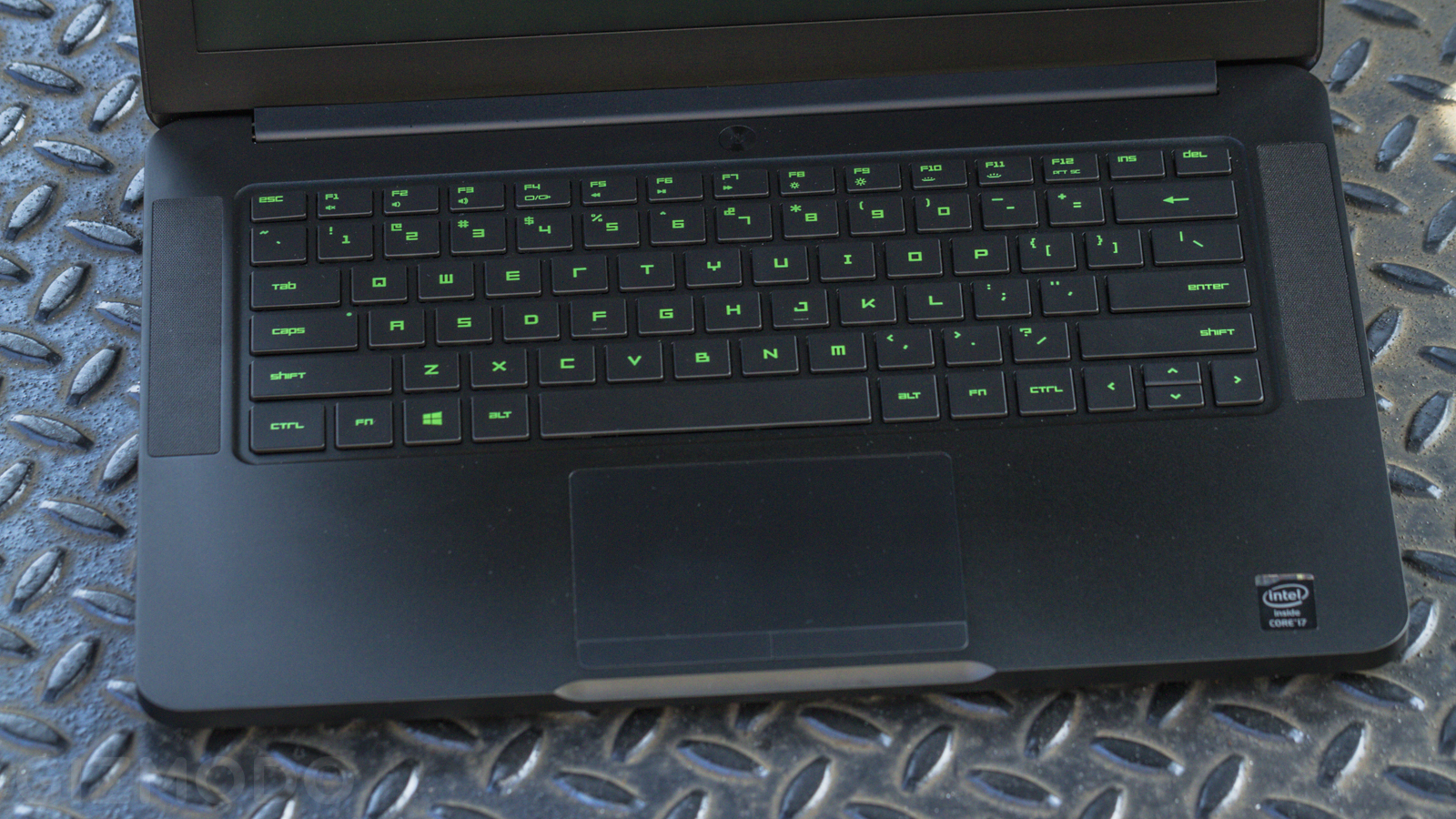
Gaming is what you’d expect given the hardware. The Nvidia GeForce GTX 675M is a fairly decent card, and you’ll be able to run most modern games on ‘High’ settings and get extremely playable framerates. BioShock Infinite was well over 60FPS at ‘High’. Skyrim was in the high 40s; Dishonored in the 50s (with a few dips); and congested areas of WoW 25-35. All of which is to say this is an extremely capable setup, although certainly not top end.
Battery life isn’t what you’ve been seeing from other Haswell computers. It’s not the 12+ hour MacBook Air, or even the 8-10 hour Vaio. But it’s not all that bad. We got two hours and 45 minutes of battery with mixed usage (one hour Skyrim, one hour assorted web browsing, 45 minutes BioShock infinite; 60 per cent brightness, backlit keys off), and over two hours of Team Fortress 2 at the same settings. The original Blade ran TF2 for 49 minutes before crapping out. So this is progress.
Back in late 2011, after it had announced the first Blade, Razer told us that the reason it went with 17 inches was that that’s the smallest possible screen that you can use and still easily immerse a viewer into the environment. Any smaller and you’re not getting a full experience. The 14-inch version more or less confirms this. It’s perfectly OK for games, but you’re going to want to hook it up to a larger monitor if you’re at a desk — for the extra real estate/immersion, but also for the hunched-over factor of gaming on a 14-inch laptop.
The screen itself is one of the few weak points here. It looks fine — in games more than when browsing the web or using other apps — but the 1600×900 resolution just doesn’t feel in line with the rest of the machine. 1080p would have been ideal, especially with Windows 8.1 handling the higher density displays a little better now, but richer colours with more contrast would have been an improvement too. The matte finish is nice, but with the rest of the laptop collecting every fingerprint it comes in contact with, the message feels a little skewed. The Blade draws to 1080p displays just fine, so it’s not like the Razer Edge, which was forced into its 1366×768 display because of horsepower.

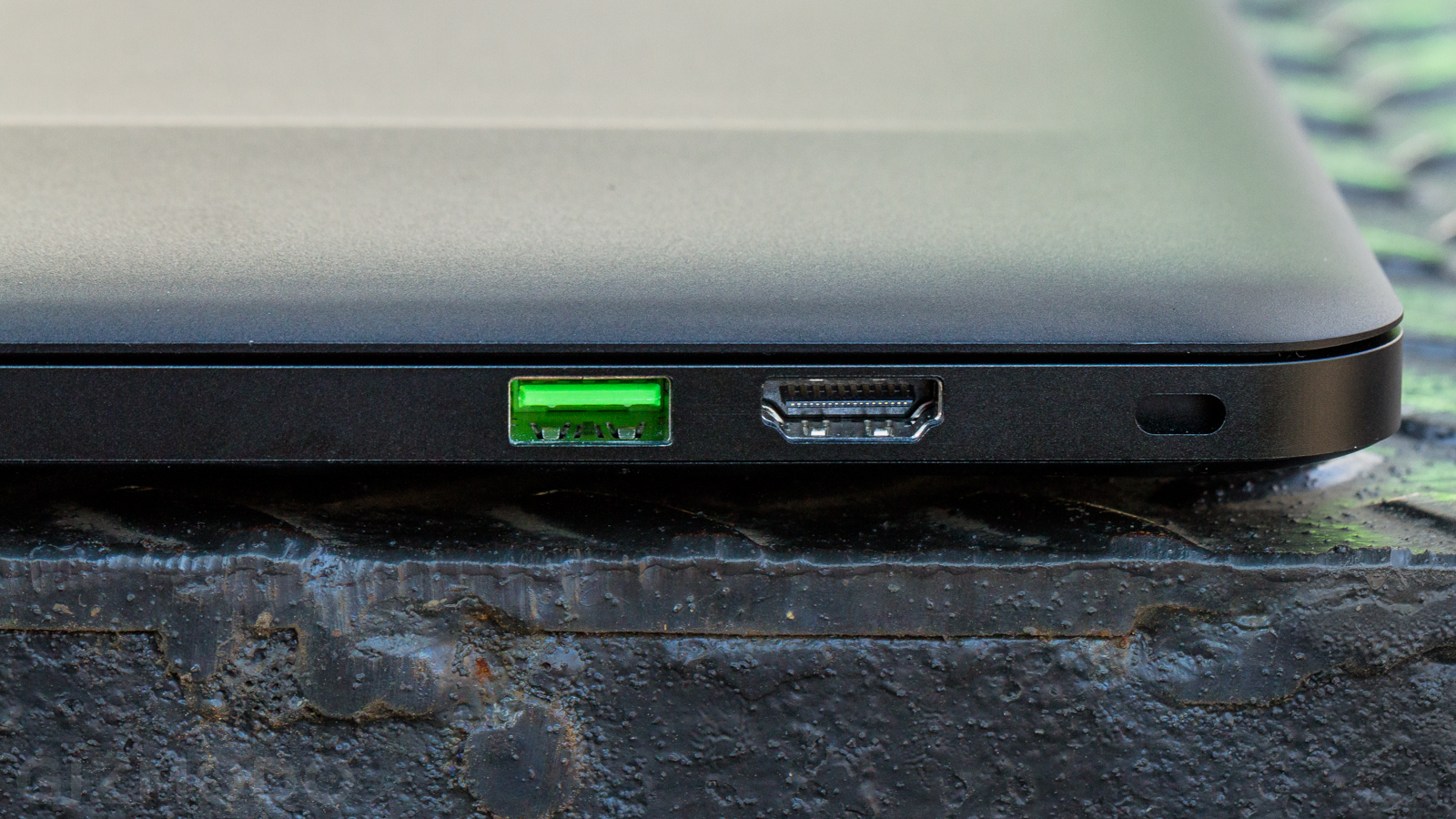
Like
This is very close to a perfect body for a gaming laptop. The Blade is gorgeous well built. There is zero flex anywhere. It runs current games on high graphics settings at good-to-acceptable framerates. The trackpad is more responsive than the majority of trackpads on Windows laptops, and the keyboard is just about perfect. While the body gets hot during gaming, the fans do a good job of not letting it affect performance without sounding like a wind tunnel.
No Like
The mostly awesome trackpad is almost completely submarined by its idiotic buttons. Battery life is hugely improved from your standard gaming rig, but you’re getting nowhere near the six hours claimed by Razer. The screen is sub-optimal, on colour performance and viewing angles (a problem for a matte display). And, at 1600×900, feels like by far the weakest link and the piece that will age the poorest.
Test Notes
- As you’d expect, it gets hot, but within reason. The Blade actually does a really nice job of controlling its temperature (without a lot of fan noise) when you’re not gaming; doing everyday tasks, it was rarely above room temperature. Once you start gaming, however, the heat cranks up. It gets hot enough to physically burn you if you do something dumb like rest it on your chest, and the dual exhaust fans on the bottom line up almost exactly with where you’d rest it on your thighs/knees (sigh). Still, the heat stays closer to the bezel of the screen for the most part, and the palm rests and keyboard area were never worse than warm. Extended sessions also didn’t cause any slowdown to framerates in-game, which is nice for anyone who’s ever had to prop up their laptop and point a fan at it to keep a game running for more than 30 minutes.
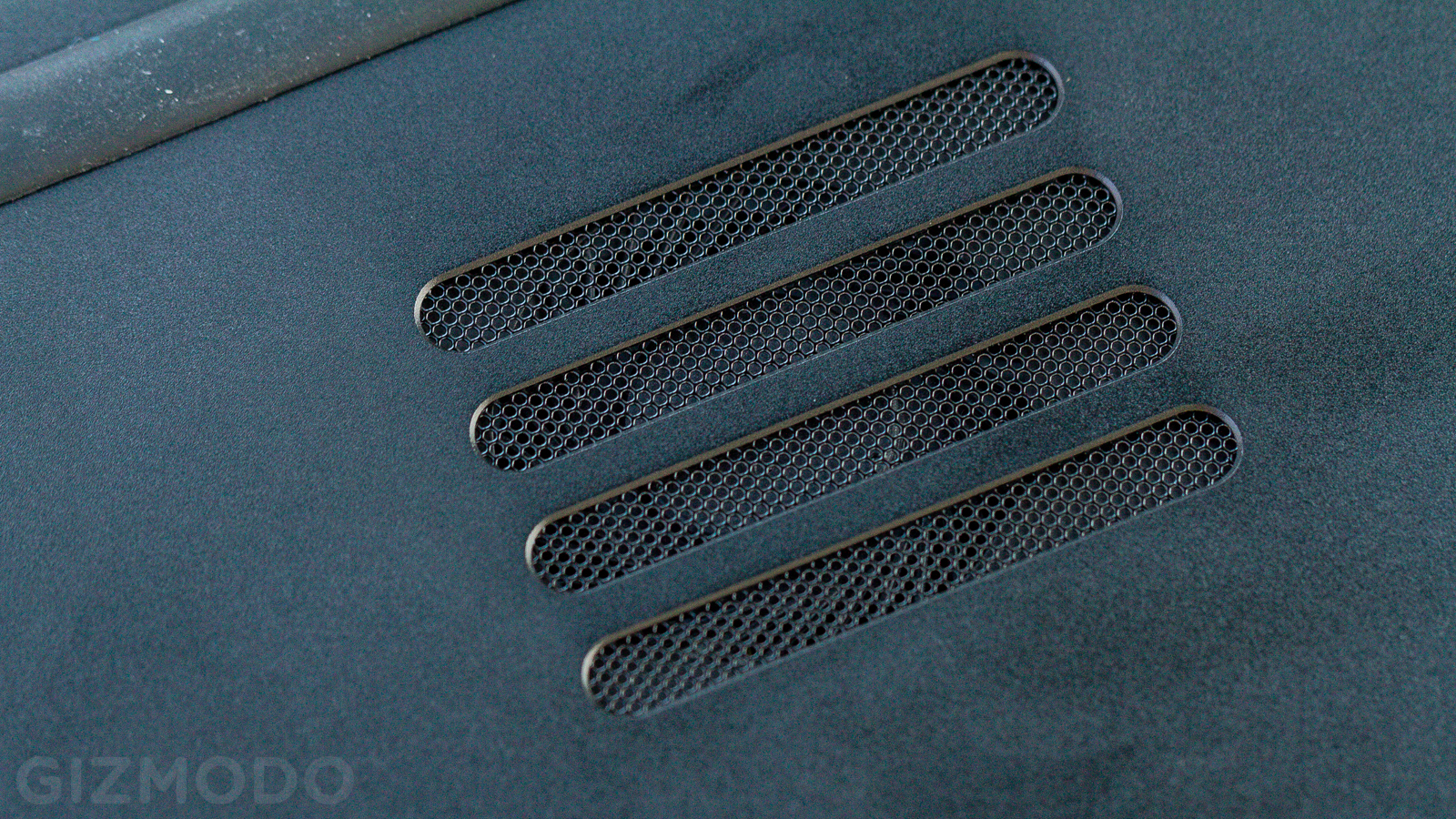
- Razer does a pretty good job of shipping without any bloatware. You have some Razer component stuff, but you’ll want those for keeping drivers up to date anyway. Otherwise, it’s just a few Intel and Nvidia shortcuts.
- As you’d guess, the drivers aren’t perfect with Windows 8.1 yet. For the final day or two testing, I stuck 8.1 on the Blade and the 14-inch screen is very improved by the new Snap.
- I can’t stress enough how many fingerprints this thing collects. Wiping it down with a microfibre cloth is enough to get rid of them, but it can be distracting.
- The speakers are loud and clear, but also quite tinny. The bass is almost non-existent. But you’ll be able to make out voices and sound cues in games, and it’s more or less acceptable for movies and TV.
- At startup, the Blade would occasionally make a noise like a circada was being spin through a bicycle tyre’s spokes, which was probably coming from the fan, but I really have no idea.

Should You Buy This?
Yes. The standard line for Razer hardware has usually been, “Hahaha, NO. Unless you lactate liquid gold.” Here, though, the price is still steep, but not insanely steeper than its peers.
The Blade isn’t perfect — it’s really hard to forget how awful those trackpad buttons are — but it’s a freaking awesome computer that is somehow also a decent value. Get it if you’re looking at getting a nice laptop to game on that you can use for just about anything else too without breaking your back or your bank account.
Razer Blade (specs as reviewed)
Processor: Intel Core i7 2.2GHz Haswell
Graphics: Nvidia GeForce GTX 765M (2GB GDDR5 VRAM; Optimus); Intel HD 4600
Memory: 8GB RAM
Display: 14-inch 1600×900 matte LED backlit
Storage: 256GB SSD
Ports: 3x USB 3.0, HDMI Out, 3.5mm audio
Dimensions: 13.6 inches x 9.3 inches x 0.66 inches
Weight: 1.9kg
Price: $2499.95 RRP in Australia
